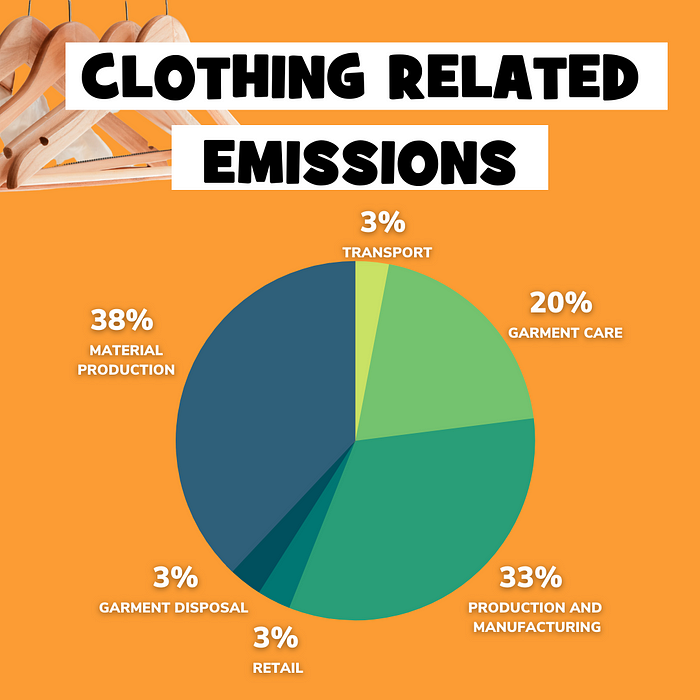Five ways to a more sustainable wardrobe in 2022
All over the globe, Leeds alumni are helping to combat the climate crisis.
In this guest blog post, we hear from Rob Greenland (Spanish and French 1996), co-director of Social Business Brokers CIC, a Leeds based social enterprise which runs Empty Homes Doctor and Zero Waste Leeds.
Rob considers the impact of the clothing industry upon the environment, and five clothing habits we can adopt to create a more sustainable future.

It’s estimated that up to 10 per cent of global CO₂ emissions are clothing related. So the choices we make about the clothes we wear matter.
When you look back at the history of Leeds, one industry jumps out as central to the growth of the city that we know today — textiles. We see this in the University itself — in buildings like The Clothworkers’ Hall and the University’s outstanding reputation for world-leading textile industry research.
So it’s no coincidence that one of the main areas of focus for Zero Waste Leeds is clothing and textiles. Our social enterprise works with people and organisations across the city to design practical solutions that help us all to waste less stuff.
Clothing related emissions
We run campaigns on all sorts of issues, from recycling to reuse and repair, and we also develop practical projects like Leeds School Uniform Exchange. Increasingly, we aim to emphasise how waste reduction will play a key role in our city’s response to the climate emergency.
And this is what led us to focus on clothing.
It’s estimated that up to 10% of global CO2 emissions are clothing related. So the choices we make about the clothes we wear matter.
To reduce impact, it’s useful to understand exactly where those impacts happen. We spoke with Dr Mark Sumner from the School of Design at the University, who talked us through the climate impacts of clothing.

As you can see, much of the impact relates to the production of raw materials (which includes processes such as growing cotton, or manufacturing polyester) and the production of the clothes themselves (including processes like dyeing).
What’s perhaps more surprising is that over a fifth of the emissions from clothing relate to what we do once we’ve bought them — how we wash, dry and iron them, and what we do with them when we no longer want them.
So it’s a reminder that, as with so many issues relating to the climate emergency, it’s complex. And there are no easy answers.
But there are things we can do.
Over the last couple of years we’ve run two clothing related campaigns. With Leeds Fashion Futures, we worked with partners including Dr Pammi Sinha from the School of Design and The RSA, to explore how Leeds could learn from its rich textile heritage — and once again lead the world when it comes to sustainability in clothing and textiles.

And during COP26 we ran a #ZeroWasteClothing campaign, informed by Leeds University research, and focused on the practical actions we can all take to reduce the climate impacts of clothing.
We explored this issue from three perspectives:
● What can we each do as individuals?
● What can we do together — as a city?
● How do we use our influence — to demand that governments and businesses do more?
You can explore more of the campaign here, but there are five things we can all consider doing to reduce the climate impacts of clothing.
Five things you can do
- Buy better — Think carefully about the clothes you buy — maybe buying fewer clothes that you’ll wear more often. Ask yourself, how often am I likely to wear this?
- Take good care of your clothes — Wash them less and at lower temperatures, line-dry them when you can, and give yourself a rest from the ironing….
- Consider alternatives to buying new — If you live in Leeds, our #ZeroWasteClothing map helps you find your nearest charity shop, and Leeds has a thriving vintage clothing scene. There are more and more options for renting clothes and tips on how to do so here. In Leeds, clothes swaps are setting up around the city — and our Leeds School Uniform Exchange project makes it easy to share second hand school uniform.
- Wear your clothes for longer — Given the big climate impacts of clothing manufacturing, extending the life of your clothes is one of the most impactful things you can do. Try to get good use out of each item you own — and if you haven’t worn something for ages, donate it. Just try not to throw it away!
- Use your voice and influence — Let friends and family know that this is something you care about — and let politicians and business leaders know that you want them to do more. Contact your favourite brand and ask them what they’re doing to make the clothes you buy from them more sustainable.
Faced with the climate crisis, it’s easy to feel overwhelmed or powerless. But by focusing on practical actions — and emphasising how we can amplify those actions by acting together –we really can make a difference.
To get involved, you can find us on Facebook, Twitter, Instagram, YouTube and LinkedIn.
Further information
Discover more from Leeds alumni helping to combat the climate crisis in our podcast, blog and features series here.
This blog is part of the Leeds Alumni Voices series. The opinions expressed in these publication are those of the authors. They do not purport to reflect the opinions or views of the University of Leeds or its members. The designations employed in this publication and the presentation of material therein do not imply the expression of any opinion whatsoever on the part of the University of Leeds.
